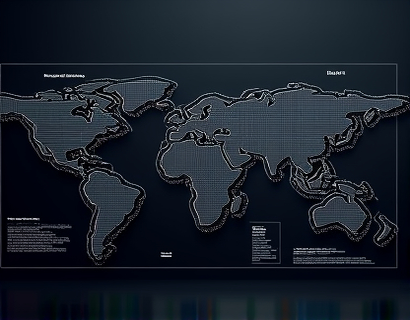Advancing Research in Graph Theory and Fluid Dynamics: The Role of Cutting-Edge Software
In the realm of applied mathematics and engineering, the intersection of graph theory and fluid dynamics represents a frontier of complex systems analysis. The intricate nature of these fields demands sophisticated tools for data analysis and visualization, enabling researchers and engineers to unravel the underlying patterns and optimize system performance. Recent advancements in software technology have introduced powerful solutions tailored for these specific needs, significantly enhancing the capabilities of professionals in these domains.
Graph Theory Software: Navigating Complex Networks
Graph theory, a branch of mathematics that studies the properties of graphs, has found extensive applications in various fields including computer science, network analysis, and optimization. In the context of research, graph theory software serves as an indispensable tool for modeling and analyzing complex networks. These networks can represent everything from social media interactions to transportation systems, and understanding their dynamics is crucial for optimizing performance and identifying critical nodes.
Modern graph theory software offers advanced algorithms for graph traversal, shortest path finding, and network flow optimization. These tools enable researchers to simulate and analyze the behavior of complex networks under various conditions. For instance, in traffic flow optimization, graph theory algorithms can model road networks and suggest efficient routing strategies to minimize congestion. Similarly, in social network analysis, these tools help identify influential nodes and communities, providing insights into information dissemination patterns.
Fluid Dynamics Software: Simulating Complex Fluid Behaviors
Fluid dynamics, another cornerstone of applied mathematics, deals with the study of fluids in motion. The simulation of fluid flows is essential in numerous engineering applications, including aerodynamics, hydrodynamics, and heat transfer. Software designed for fluid dynamics research provides a platform for creating detailed simulations that capture the intricate behaviors of fluids under various conditions.
These software solutions employ numerical methods such as the Finite Element Method (FEM) and the Computational Fluid Dynamics (CFD) approach to solve the governing equations of fluid motion. Researchers can input specific parameters like fluid viscosity, density, and boundary conditions to observe how fluids interact with different surfaces and environments. This capability is invaluable for designing more efficient aircraft, optimizing pipeline systems, and enhancing heat exchanger performance.
Integration of Graph Theory and Fluid Dynamics
The synergy between graph theory and fluid dynamics creates a powerful framework for tackling multifaceted problems. For example, in the study of porous media flow, graph theory can model the network of pores, while fluid dynamics software simulates the fluid flow through these pores. This combined approach allows for a comprehensive analysis of transport phenomena, providing deeper insights into the behavior of fluids in complex media.
Moreover, the integration of these fields extends to the analysis of biological systems, such as blood flow in vascular networks. By modeling blood vessels as a graph and simulating fluid dynamics within this network, researchers can better understand physiological processes and develop more effective medical treatments.
Advanced Visualization Techniques
One of the most significant advantages of modern software in both graph theory and fluid dynamics is the enhanced visualization capabilities. Visualization is crucial for interpreting complex data and communicating findings effectively. Advanced software tools offer a range of visualization options, from 2D and 3D graph representations to dynamic fluid flow visualizations.
For graph theory, visualization tools can display nodes and edges in various layouts, such as force-directed or hierarchical layouts, to highlight the structure and relationships within the network. Color coding and size variations can be used to represent additional attributes like node importance or edge weight. In fluid dynamics, visualization software can render velocity fields, pressure distributions, and temperature gradients, providing a clear and intuitive understanding of fluid behavior.
Interactive visualization features allow users to manipulate the simulation parameters in real-time, observing the immediate effects on the network or fluid flow. This interactivity is particularly useful for educational purposes, enabling students and researchers to explore and experiment with different scenarios to deepen their understanding.
Optimization and Performance Enhancement
Optimization is a critical aspect of both graph theory and fluid dynamics research. Software tools designed for these fields incorporate advanced optimization algorithms to find the best solutions to complex problems. In graph theory, optimization algorithms can be used to solve problems like the traveling salesman problem, minimum spanning tree, and maximum flow problems, which have wide-ranging applications in logistics, telecommunications, and resource allocation.
In fluid dynamics, optimization algorithms help in designing systems that minimize energy consumption or maximize efficiency. For instance, in aerodynamic design, software can optimize the shape of an aircraft wing to reduce drag and improve fuel efficiency. Similarly, in chemical processing, fluid dynamics simulations can be optimized to enhance mixing and reaction rates, leading to more efficient production processes.
Machine learning and artificial intelligence techniques are increasingly being integrated into these software tools, further enhancing their optimization capabilities. By leveraging data-driven approaches, researchers can automate the optimization process, reducing the time and effort required to achieve optimal solutions.
Real-World Applications and Case Studies
The practical applications of graph theory and fluid dynamics software are vast and varied. In the transportation sector, graph theory software has been used to optimize public transit systems, reducing travel times and improving service reliability. For example, cities like London and New York have employed graph theory algorithms to redesign bus and subway routes, leading to more efficient and user-friendly transit networks.
In the automotive industry, fluid dynamics software plays a pivotal role in the design and testing of vehicles. Car manufacturers use CFD simulations to evaluate aerodynamic performance, ensuring that new models meet stringent efficiency and safety standards. These simulations help identify areas of high drag and turbulence, allowing engineers to make informed design adjustments.
A notable case study involves the optimization of a wind farm layout using graph theory and fluid dynamics combined. By modeling the wind turbines as nodes in a graph and simulating the airflow between them, researchers were able to determine the optimal spacing and orientation of turbines to maximize energy capture while minimizing wake effects. This approach led to a significant increase in overall energy production.
Future Directions and Emerging Trends
The future of graph theory and fluid dynamics software is promising, with ongoing research aimed at addressing new challenges and expanding application domains. One emerging trend is the development of multi-physics simulation tools that integrate graph theory and fluid dynamics with other physical phenomena, such as heat transfer and structural mechanics. These comprehensive models provide a more holistic view of complex systems, enabling more accurate predictions and better-informed decisions.
Another area of growth is the use of cloud computing and high-performance computing (HPC) to handle large-scale simulations. Cloud-based platforms allow researchers to access powerful computational resources on-demand, reducing the time and cost associated with running intensive simulations. This accessibility democratizes advanced research tools, making them available to a broader range of scientists and engineers.
Furthermore, the integration of virtual and augmented reality technologies is transforming the way researchers interact with simulation results. Immersive visualization environments enable a more intuitive understanding of complex data, facilitating better decision-making and collaboration among multidisciplinary teams.
Conclusion
The convergence of graph theory and fluid dynamics software represents a significant advancement in the field of applied mathematics and engineering. These cutting-edge tools empower researchers and engineers to tackle complex problems, optimize system performance, and drive innovative discoveries. As technology continues to evolve, the potential for new insights and applications in these fields remains vast, promising a future of continued growth and innovation.










































